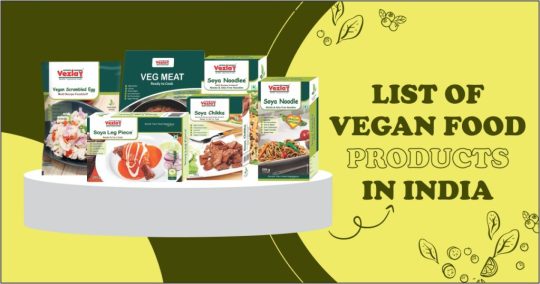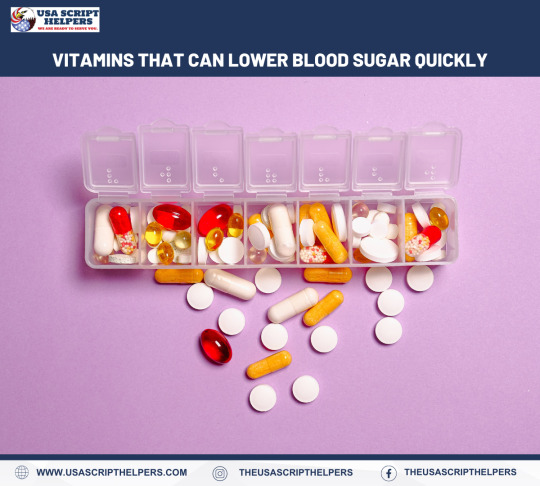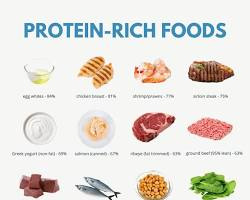#fruit for lowering blood sugar levels
Text
4 Must-Try Juice Recipes For Diabetics
If you’re ready to dive headfirst into the world of juicing, here are a few delicious recipes to get you started.
Diabetes restricts most kinds of sweetened fruits and vegetables from your diet. However, that doesn’t mean you have to give up on all good things. Here are some fruit juice recipes you must have that will regulate your sugar levels and always keep you healthy and fit.

Apple Drink
This tasty diabetic juice recipe does have a foundation that not only lowers diabetes risk and keeps sugar in check but also has many other positive health effects. Here are some ingredients to blend and juice together to create this drink.
Carrots
Diced red apples and green apples
One lemon
A slice of ginger
Get it all in a juicer, and strain the excellent health drink.
Greenland Soda
This beverage contains all the vital green vegetables that are solid detoxifiers and help digestion; this is one of the finest juicing recipes for diabetes. The ingredients for this beverage are:
Green chard
Kale
Green cabbage
Green apple
Celery stalk
One lemon
Put all the ingredients in the juicer and strain them out in a glass to have an excellent health drink.
Vegetable land drink
This drink is one of the best juicing foods for diabetics, and you will become addicted to it. This juice consists of the following:
Half of a beet
4 carrots
Tomato
Garlic clove
Spinach Bunch
Lettuce leaves
Parsley leaves
Celery stalk
Salt
Make fresh juice with the ingredients and add the salt at the end. You may now serve the beverage.
Bitter melon
This is a miracle fruit for lowering blood sugar levels. The mixture can be improved by adding different fruits if the original flavor is too strong for your liking. You need these ingredients for the most fundamental juice:
Pair of sour watermelons
water
It tastes best freshly after being prepared, either by juicing or blending, according to personal choice. It’s also possible to improve the flavor of melons by juicing them with cucumber, green apple, or lemon.
Pureed sweet potato juice
If you’re looking for a diabetic juicing recipe that’s high in fiber and will help keep your blood sugar stable, this is another excellent option. To do this, you must have the following:
One sweet potato.
Green apple
Celery stalk
Fresh ginger
A dash of cinnamon sugar
Prepare the juice and serve your drink fresh.
Besides these, blueberry is an ideal fruit for people with high blood sugar. All you need to do is blend some freshly plucked blueberries with watermelon juice and serve fresh. You can add some lemon juice to enhance the flavor of your favorite drink.
Source: https://www.healthoncheck.com/4-must-try-juice-recipes-for-diabetics/ /
Read About 4 Must-Try Juice Recipes For Diabetics
About The Health on Check
In a world drowning with an overload of digital information, healthoncheck.com brings a sense of calm to the cacophony. It is a leading content platform that provides engaging content across verticals like health, fitness, wellness, lifestyle and relationship among others. Our fresh take on a diverse range of topics spanning multiple verticals keep audiences of varied interests engaged with our infotainment content.
0 notes
Note
any general weight loss tips? st@rv!ng never seems to work for me
i've got a few, will update as soon as i find more
up your protein and fiber intake (fiber slowly or you'll bloat which can cause weight gain) protein is good for your muscles and bones
drink half your body weight (lbs) in oz (for example, im ~100lbs, i need 50oz a day)
limit sugars (unnatural) and processed food, they can cause bloating and constipation which will both lead to weight gain
prioritize sleep, if you can't sleep like most of us, take melatonin, melatonin is thought to increase metabolism anyways
cut back on simple refined carbs, they don't take as long to digest and therefore won't fill you up as long as complex carbs such as whole grains, beans, etc, complex carbs also have more fiber which will also keep you fuller for longer
eat slower, chew your food thoroughly and try to take 20 minutes with meals, it takes our bodies 20 minutes to realize we're full
try to reduce stress, it can make you want to overeat or binge if stress levels are too high. some things to try are going on a walk, deep breathing exercises, yoga, and meditation
use smaller plates, studies show that using smaller plates and bowls will reduce the chances of overeating and will help with portion control
eat more fruits and veggies, they have essential nutrients and a majority are lower in cals and fat
intermittent fast, it's recommended to wait 12h between dinner and breakfast the next day, this will give your body time to break down carbs and glucose which in turn will help with weight loss
reduce or eliminate liquid cals, it's very easy to drink your calorie limit without filling up at all, examples are gatorade, alcohol, tea/coffee with sugar, and sodas. most of us use artificial sweeteners but those can also lead to weight gain in the long run
don't skip breakfast, it might be tempting to fast as long as possible but having breakfast has been linked to helping with metabolism and blood sugars, make sure to have protein like eggs or yogurt so you stay full until your next meal
be physically active (if you're able to), exercising can help tone your body and burn cals which not only can help with weight loss but also fat loss
increase healthy fats, a 12-month study shows that a high fat diet is better for long-term weight loss than a low fat diet, foods with healthy fats include olive oil, nuts, coconut oil, avocados, and seeds. they are still pretty high cal so eat them in moderation
drink coffee, believe it or not it can increase metabolism, boost the breakdown of fatty acids, enhance fat burning during aerobic exercises, especially for those who are normally sedentary, and stimulate your central nervous system
increase probiotics, not only does it help digestion but it's also been shown to reduce bmi, body fat percentage, and weight
avoid trans fat, it's linked to abdominal fat gain, inflammation, heart disease, and insulin resistance
reduce alcohol intake, yes it makes you feels nice but it can also cause belly fat and excess fat storage around the waist
eliminate distractions while eating, it can cause you to overeat by losing track of how much you've ate, it can also help you feel fuller if you see how much you've ate
meal prepping, it'll help you stay on track with eating healthy especially on days where you're busy since it might seem easier to grab a snack and go instead of search through what you have and see what you can make
this took over an hour to write so likes/reblogs are appreciated
#gvtz#gvtz asks#tw ed sheeran#tw 3d vent#tw thinspi#@na motivation#thin$po#@na vent#light as a 🪶#4nor3xia#th1n$pø
83 notes
·
View notes
Text
TYPES OF TEA'S AND THEIR BENEFITS ♡⠀࣭⠀ֹ⠀͡꒱



hello! today i'll be talking about the benefits of drinking tea. the only thing i drink besides water is tea and i love it (except the fruit ones). my personal favorite is green tea and it's so beneficial for our health.
1. green tea - the best tea there is for weight loss and treating your skin, good for diabetes and it boosts heart and brain health.
2. chamomile tea - amazing for sleep, reducing anxiety, good for the heart, for soothing coldes and sore throats. (in my country we also use it for treating conjunctivitis)
3. peppermint tea - good for bad breath, improves energy and digestion, helps in relieving menstrual cramps, good for sleep and relieves clogged sinuses.
4. white tea - improves immune system, promotes weight loss and heart diseases, good for skin health, dental health and cancer prevention.
5. black tea - promotes heart health, reduces the risks of strokes, improves focus, lowers blood sugar levels.
6. matcha tea - helps you manage weight, makes you think more clearly and reduces disease risks.
7. jasmine tea - boosts immune system, improves mental clarity and alertness, aids in digestion and reduces inflammation.
8. hibiscus tea - lowers blood pressure, fights inflammation and bacteria, good for liver health, promotes weight loss and it lowers cholesterol.
9. lemon tea - reduces anti-aging, good for mental health, antibacterial activity, anticancer activity and good in lowering blood pressure.
10. yellow tea - promotes digestion health and heart health.
with love, 𝒯
193 notes
·
View notes
Note
So if the body needs 45-65% of calories in carbs to be functional, does that mean low-carb-diet that brings people to the lower end of that range (45%) is inherently the most legitimate diet?
The most legitimate diet is one that makes you feel satisfied, does not make you sick, and meets your nutritional needs.
Beyond that, no. There is no "most legitimate diet."
The concept of "a diet" is honestly kind of flawed, depending on how you define "diet." And if you are defining "diet" as "a means of eating that will guarantee and maintain weight loss" then yeah the idea is flawed from jump.
Your metabolism is the sum total of all the chemical reactions in your body. Your diet is all of the foods and liquids that you consume.
Different people have different caloric needs and different metabolisms; eating in different ways can change your metabolism, as can exercising in different ways.
There is no universally correct way to eat. There is also no universally correct way to exercise.
If you are looking for ways to improve your diet, here are the very few things that are applicable to a lot (perhaps the majority) of people:
You probably need to eat more fruits and vegetables
You almost certainly do not need to worry about getting enough protein
You should do an activity that raises your heart rate to aerobic levels for 150 minutes a week
However, setting that aside: getting 45% of your diet from carbohydrates is not considered a low-carb diet. There are a lot of ways to define "low carb" but two of the more general ones are "30% or less of your daily caloric intake is carbohydrates" and "100 or fewer grams of carbs per day."
The Atkins diet, a very popular low-carb diet calls for 100 or fewer grams of carbs per day. If we're going by the 2000 calorie RDA (which is flawed but a common baseline way of doing the math on these things) that means that 20% of an Atkins dieter's calories would come from carbohydrates.
The Keto diet calls for 50 or fewer grams of carbs per day. So 10% of calories from carbs.
You will recognize these as far below the recommended minimum for the average person.
Low-carb diets are also not especially effective for weight loss or improving metabolic health in the long term.
There are some people who eat low-carb diets who feel great with that mix of nutrients. There are some people who are on medically necessary low-carb diets (and there are people on medically necessary low-fat and low-protein diets!)
In our current culture, when people talk about "diets" they are not talking about all of their food and liquid intake and how it relates to their metabolic function, they are talking about dieting, or "going on a diet."
Dieting is not an effective way to lose weight and maintain weight loss in the long term (we do not know of a generalizable way for most people to lose weight and maintain a weight loss in the long term!) and is more likely to cause weight gain rather than weight loss 2-5 years after the start of the diet. Dieting is not by itself an effective way to improve metabolic health in the long term, and may actually significantly damage metabolic health depending on how restrictive the diet was and how long it continued. (Also: just to be clear, it is much more effective to focus on improving things like resting heart rate, fasting blood sugar, lipid levels, and vitamin deficiencies for better health outcomes than it is to focus on losing weight.)
Looking for the best/most legitimate diet so that you can start eating that diet is very unlikely to net you positive results for your health. Dieting is not effective.
A better way to approach the issue of your diet is to think about what changes you can make in your eating and exercise habits that will help you to feel good, make you feel full, maintain your health, and maintain muscle strength, cardiovascular health, and flexibility.
Don't go out looking for the "most legitimate diet," see if you can add some more fresh fruit to your diet. See if you can make sure you're getting enough fiber. See if you can eat at least one whole serving of vegetables with each meal.
When people talk about things like low-carb diets or diets with no refined sugar or paleo diets or low-fat diets they are asking "What are the bad foods? What should I never eat? What food should I never buy again? What is the food that will make me better if I stop eating it? What can I cut out? What are the bad things that I can avoid?"
Unless you have a medical restriction from a particular food, I don't think that it's good to think of your diet and how you eat in terms of rigid rules and I definitely don't think it's good to approach your diet asking what you can take away from yourself. I think you should ask what you can add to your diet that will improve your overall health.
640 notes
·
View notes
Text
🌟 The Healthy Choice: Plain Yogurt and Greek Yogurt Over Flavored Yogurt Introduction 🌟


Yogurt is a versatile and nutritious dairy product that has gained immense popularity among health-conscious individuals. While the yogurt aisle at your local grocery store may offer a rainbow of flavors, it's essential to understand why plain yogurt and Greek yogurt stand out as the healthier choices. In this blog post, we'll delve into the reasons why opting for plain yogurt can be a smart move for your health.
Minimal Added Sugar: One of the most compelling reasons to choose plain yogurt is the absence of excessive added sugars. Many flavored yogurts on the market contain high levels of added sugars, which can contribute to weight gain, increase the risk of chronic diseases, and disrupt blood sugar levels. In contrast, plain yogurt allows you to control the sweetness by adding natural sweeteners like honey or fresh fruits, keeping your sugar intake in check.
Probiotic Power: Yogurt's reputation as a gut-friendly food is well-deserved, primarily due to its probiotic content. Probiotics are live beneficial bacteria that promote a healthy gut microbiome. Plain yogurt, whether regular or Greek, tends to contain a broader spectrum and higher concentration of these probiotics compared to flavored counterparts. These friendly bacteria aid digestion, support the immune system, and may even impact overall well-being.
Versatile and Customizable: Plain yogurt provides a blank canvas for culinary creativity. You can tailor its taste to suit your preferences by adding a variety of ingredients, such as fresh berries, nuts, seeds, or a drizzle of pure maple syrup. This versatility ensures that you can enjoy a different yogurt experience every time you consume it.
Lower Calories and Fat: If you're watching your calorie and fat intake, plain yogurt is the way to go. It typically contains fewer calories and less saturated fat than flavored alternatives. You can relish the creamy texture of Greek yogurt while maintaining better control over your dietary choices.
Healthier Ingredients: Plain yogurt is a purer form of yogurt, containing just two primary ingredients: milk and live active cultures. In contrast, flavored yogurts often include artificial flavorings, colors, and preservatives. By opting for plain yogurt, you're choosing a simpler and cleaner ingredient list.
Weight Management: Due to its high protein content, yogurt, especially Greek yogurt, can be an excellent ally in your weight management journey. Protein keeps you feeling full and satisfied, reducing the likelihood of overindulging between meals.
When it comes to yogurt, the choice between plain yogurt and flavored yogurt is clear. Plain yogurt, whether it's traditional or Greek, offers superior health benefits by providing you with control over added sugars, a broader spectrum of probiotics, versatility in taste, and cleaner ingredient lists. By making this simple swap, you're not only taking a step toward better health but also opening up a world of delicious, customizable yogurt creations. So, the next time you reach for that yogurt container, remember that plain is not boring—it's a smart and healthy choice!
🌟 Dressing up your Greek yogurt or plain yogurt can turn a simple snack or breakfast into a delicious and satisfying treat. 🌟

Here are some healthy and tasty toppings and mix-ins to consider:
Fresh Fruits: Add sweetness and natural flavor with fresh fruits like berries, sliced bananas, diced mangoes, or chunks of pineapple. The combination of creamy yogurt and fruity goodness is delightful.
Nuts and Seeds: Boost the texture and nutrition by sprinkling a handful of chopped nuts (e.g., almonds, walnuts, or pistachios) and seeds (e.g., chia seeds, flaxseeds, or pumpkin seeds) over your yogurt. They provide healthy fats, protein, and a satisfying crunch.
Honey or Maple Syrup: A drizzle of honey or pure maple syrup adds a touch of sweetness without resorting to processed sugars. It pairs wonderfully with Greek yogurt's tanginess.
Granola: Crispy granola clusters are a classic yogurt topping. Choose a low-sugar or homemade granola to maintain a healthy balance.
Nut Butter: Swirl in a spoonful of almond butter, peanut butter, or cashew butter for added creaminess and nutty richness. It's a fantastic combination with sliced bananas.
Dried Fruits: Chop up dried fruits like apricots, raisins, or cranberries to infuse your yogurt with a chewy sweetness.
Cinnamon or Nutmeg: A sprinkle of ground cinnamon or nutmeg can add warm, comforting flavors to your yogurt.
Vanilla Extract: A drop or two of pure vanilla extract can enhance the overall taste of your yogurt, making it feel like dessert.
Coconut Flakes: Toasted or untoasted coconut flakes provide a tropical twist and delightful texture.
Dark Chocolate Chips: If you're in the mood for a touch of indulgence, add some dark chocolate chips for a hint of sweetness and chocolatey richness.
Spices: Experiment with spices like cardamom, ginger, or cloves for unique flavor profiles.
Savory Options: Don't forget that yogurt can go savory too. Try adding chopped cucumber, fresh herbs, a pinch of salt, and a drizzle of olive oil for a refreshing, savory yogurt bowl.
Fruit Compote: Top your yogurt with a homemade or store-bought fruit compote or jam for a burst of flavor.
Mix and match these toppings to create a variety of yogurt bowls that suit your taste preferences and dietary needs. Whether you prefer a sweet, savory, or balanced flavor profile, dressing up your yogurt can make it an exciting and nutritious part of your daily diet.
#astrology observations#astrology notes#astrology rants#astrology#aquarius placements#cancer placements#sagittarius placements#aries placements#capricorn placements#gemini placements#leo placements#virgo placements#scorpio sun#aquarius placements#libra placements#taurus placements#greek yoghurt#plain greek yogurt#plain yoghurt#healthy eating#nutrition facts#Gut health#healthy living#healthy placements
22 notes
·
View notes
Text
Top 10 Healthy Foods for Your Diet
In a world inundated with fad diets and conflicting nutritional advice, finding the right foods to fuel your body can feel like navigating a maze. But fear not! We've compiled a list of the top 10 healthy foods that will not only nourish your body but also tantalize your taste buds. Say goodbye to confusion and hello to delicious, nutritious eating!

Avocados
Avocados are not only delicious but also incredibly nutritious due to their high content of heart-healthy monounsaturated fats, fiber, potassium, and vitamins C, E, and K. They can be enjoyed in various ways, such as smashed on toast, whipped into guacamole, or sliced onto salads, making them a versatile addition to any meal.
Berries
Berries, including strawberries, blueberries, raspberries, and blackberries, are not only nature's sweet treat but also packed with antioxidants, vitamins, and fiber. Adding berries to your diet can have various health benefits, including boosting brain health, supporting heart health, and aiding in weight management. They can be enjoyed fresh, frozen, or blended into smoothies for a refreshing burst of goodness.
Leafy Greens
Leafy greens like spinach, kale, Swiss chard, and arugula are nutrient-dense and offer a myriad of health benefits due to their high content of vitamins, minerals, and antioxidants. These benefits include improved digestion, enhanced immunity, and reduced risk of chronic diseases like heart disease and diabetes. Leafy greens can be incorporated into your diet by tossing them into salads, sautéing with garlic, or blending into green smoothies.
Salmon
Salmon is a nutritional powerhouse rich in omega-3 fatty acids, protein, and vitamin D, making it beneficial for heart health and brain function. It also has anti-inflammatory properties that can help reduce the risk of chronic diseases. Salmon can be enjoyed grilled, baked, or broiled, offering a delicious way to reap its numerous health benefits.
Nuts and Seeds
Nuts and seeds, including almonds, walnuts, chia seeds, and flaxseeds, are rich in healthy fats, protein, fiber, vitamins, and minerals, making them a nutritious snack. Snacking on nuts and seeds can help curb hunger, stabilize blood sugar levels, and promote heart health. They can be sprinkled on salads, added to oatmeal, or enjoyed straight out of the bag for a satisfying and nutritious snack.
Whole Grains
Whole grains like quinoa, brown rice, oats, and barley are packed with fiber, vitamins, minerals, and antioxidants, providing sustained energy and supporting digestive health. They can also help lower cholesterol levels and are a smart choice for overall health whether as a side dish, in soups and stews, or as a breakfast staple.
Greek Yogurt
Greek yogurt is rich in probiotics, calcium, and B vitamins, making it excellent for gut health and bone health. It can be enjoyed plain or mixed with fruit and honey for a sweet treat, and is a versatile ingredient that belongs in every healthy diet, whether as a breakfast staple, a creamy topping for tacos, or a base for creamy dressings.
Beans and Legumes
Beans and legumes like black beans, chickpeas, lentils, or kidney beans are loaded with protein, fiber, vitamins, and minerals, making them perfect for soups, salads, stews, and dips. Incorporating them into your diet can help promote satiety, stabilize blood sugar levels, and support digestive health.
Sweet Potatoes
Sweet potatoes are packed with fiber, vitamins, and antioxidants, particularly rich in beta-carotene, which is essential for eye health, immune function, and skin health. Whether roasted, mashed, or baked, sweet potatoes are a tasty and nutritious addition to any meal.
Broccoli
Broccoli is packed with vitamins, minerals, and antioxidants, offering a myriad of health benefits, including immune support, heart health, and cancer prevention. Whether steamed, roasted, or sautéed, incorporating broccoli into your diet is an easy way to boost your nutrient intake and support overall health.
Discover the best morning routine for a healthier lifestyle and kickstart your day with our expert tips.
#thewizardliz#the wizard liz#wonyoungism#morning routine#study routine#workout routine#shower routine#self care routine#night routine#aesthetic#coquette#dream girl#it girl#pink blog#that girl#pinterest#pink pilates princess#glow up#beauty tips#girly#pinterest girl#becoming that girl#pink princess#productivity#motivation#inspo#self care#dream life#mindset#affirmations
13 notes
·
View notes
Text
SPIRITUAL MEANING OF OFFERINGS IN AFRICAN TRADITIONAL RELIGIONS

Offerings serve as a gift or service to a spirit or deity in African traditional religions (ATRs). The spiritual meaning of offerings is associated with their overriding purpose. Offerings can be made in various ways, from food, liquids, flowers, incense, candles, etc. Though offerings are plentiful, they are not given arbitrarily.
Each spirit or deity has specific elements that it accepts for appeasement. Sometimes, people use offerings to ask for a blessing from the deity. Other times they offer them to ask for atonement or give thanks. In either case, diviners often conduct spiritual readings to determine which offering is acceptable for each circumstance and individual.
There’s an adage that there is nothing free in the spirit realm. This ultimately means that there is a price to pay for every service that you request from a spirit. In which case, spirits often require offerings and sacrifices. However, sacrifices are not within the scope of this post, you can learn more about them here. Instead, I will focus on the significance of typical offerings given within ATR in this article.

SPIRITUAL MEANING OF OFFERINGS IN AFRICAN TRADITIONAL RELIGIONS
Though each tradition has guidelines related to offerings for specific deities. Some of the spiritual meanings of offerings in these spiritual systems are outlined below:
FRUITS
Fruits are often symbolic of fertility, rebirth, growth, prosperity, and sweetness. Some common fruits people give as offerings include bananas, coconuts, and oranges. Bananas and similar fruits that come in bunches, like grapes, symbolize abundance. Bananas, in particular, represent an erect phallus, which embraces the concept of fruitfulness or fertility. And their yellow color symbolizes joy and optimism.
Consuming bananas provide a high level of energy, fiber, vitamins, and minerals. They contain magnesium and potassium, which can lower blood pressure and help regulate blood sugar levels. In this way, bananas also connect to the energy of vitality and stamina.
Coconuts are found in tropical regions and are abundant throughout such environments. Many cultures have used coconuts for their spiritual symbolism, which often relates to coolness or peace.
Oranges correlate to creativity and optimism. They can also represent spiritual purity and wisdom. Like other colors, orange vibrates with specific frequencies. Orange embodies the spirit of fire associated with motivation, inspiration, action, and movement. Making an offering with oranges is often a sign of gratitude.
HONEY
Honey has been used for many years as a source of nourishment and protection. It is believed that honey was one of the first foods eaten by humans and was originally collected from wild beehives. Honey represents the notion of sweetness or goodness in spiritual offerings.
BREAD
Bread is often given as an offering due to its importance as a staple of the diet. It often symbolizes the body and the need for physical sustenance. In essence, including bread in an offering is a way of asking or thanking a spirit or deity for your daily needs.
WATER
The spiritual meaning of water is a common theme in many religions. Universally it represents cleansing, purity, and clarity. It can likewise represent peace or coolness. Like bread, it embodies the essence of life as the human body is composed of 70% water. As such, water denotes our basic needs.
ALCOHOL
African traditional religion adherents also use alcohol as an offering. Types of alcohol given as offerings vary greatly – the most widely used varieties include gin, rum, and vodka. The element of alcohol equates to fire or heat. In which case, it invokes a sense of urgency or swift action. It likewise serves as a conduit for spirits to interact at higher levels on the earthly plane.
MILK
Milk is a source of calcium, protein, vitamins, and minerals. It is symbolic of fatness or plenty. Milk embodies a nourishing quality as it is fed to infant species throughout the animal kingdom. As such, it indicates a desire to be well fed or thanksgiving for such. Likewise, its white hue connects with purity and cleanliness.
HERBS
The variety of herbs given in ATR varies by spiritual practice. However, universally herbs tend to represent the properties that they embody. For example, mint symbolizes courage, lemongrass represents healing, and lavender coincides with peace and calm. You can learn about some of the best herbs for prosperity rituals and their symbolism in this post.
FLOWERS
The symbolic meaning of flowers is similar to that of fruits and herbs. The exact meaning connects with the type of flower. However, holistically flowers express sentiments of love, kindness, hope, and joy.
11 notes
·
View notes
Text
Over the weekend, we tried to get into the Christmas spirit. The kid and I made salt dough decorations. Then my parents took us to a Christmas fair, a lighting ceremony and an amazing lunch.



My pain levels were surprisingly pretty low throughout the day until we hung outside. Standing in one spot for a while in the cold doesn’t bode well for me. Other than that, it was a really nice weekend.
I read a book (actually, I listened to it on Audible), called Bright Line Eating. The author was a former drug and food addict turned PhD and healthy person. She includes a lot of science behind what happens in our brains when you’re a food addict and how sugar is basically as addictive as heroin. The food plan is all about portion control (weighing your food), cutting out all added sugar and flour. (Fruit is okay.) I read it because I was recommending the book to others… but I hadn’t actually read it. lol. I just heard good things about it. It’s a pretty hardcore diet but I can see why it has to be if you’re truly a food addict. Anyway, there’s a lot of research backing what she was preaching so I’m on day 3 of no sugar or flour. I figured I’ll try it for a month and see if it actually makes a difference in how I feel. In no way shape or form will I be actually weighing my food, meal planning, joining a support group or eating at specific times because I don’t care about losing weight. However, I’m writing down what I’ve been eating each day as she recommends. Anyway, if someone is struggling with weight loss/food addiction and they thrive under a structured regimen, then I think this program can be very helpful and will work.
A friend of my parents passed away this week from colon cancer. He was diagnosed a few months before I was (the first time) back in 2018. He went into remission for a while, then it came back. He wasn’t much older than me. I haven’t seen him in a long time but he gave encouraging words to my parents to pass on to me - especially when I was first diagnosed. I felt like if he was thriving and powering through, so could I. It’s a hard blow that he’s actually gone now. He left behind a beautiful family and many, many friends.
Cancer is an asshole.
I took an extra week off the Ibrance and had lab work done today. Now I know that it takes exactly 2 weeks for my blood to return to a normal person’s levels. Maybe I’ll go get a tattoo tomorrow. lol. Kidding. (Fun fact about me: I’m allergic to tattoo ink.)
I looked at my MRI scan and it turns out I have a compression fracture in my lumbar spine - at the L2. Which is where most of the cancer is. I’ve been complaining about lower back pain in that area for a long time now. The fracture was apparently on the last full spine MRI which was August of 2022. So it’s been there for well over a year and no one bothered to tell me. Awesome. (Glad I made that neurosurgeon appointment.)
I’ve been still getting in my walks. On Saturday I took a light backpack with my chair and a thermos of tea. It weighed 6.5 pounds and it was a little too heavy for my neck. After about 30 minutes of walking, I was feeling sore. So I cut my walk short and went to the beach. I saw a sea lion which was cool. Wasn’t able to get a photo, though. …but here’s some boats.

Anyway, I have a busy week ahead and need to get up early. I’m reading a weird book. Will give a review later. Going to read a bit more before bed.
#metastatic breast cancer#my posts are always longer than what I set out to write#I haven’t actually read any other peoples blogs lately#I will do that#blogging on my blog
6 notes
·
View notes
Text
These Health Risks are slowly KILLING You
You might not know this but these health risks are killing you bit by bit
Health risks may include:
Heart Disease: Overweight people are at a higher risk of developing heart disease due to many factors such as high blood pressure, high cholesterol, and increased strain on the heart which leads to death
Type 2 Diabetes: Excess weight promotes inflammation and releases fatty acids, further impairing insulin function and potentially leading to the development of type 2 diabetes.
High Blood Pressure: Excess weight can contribute to high blood pressure, which increases the risk of heart disease, stroke, and kidney disease.
Joint Pain: Carrying excess weight puts added pressure on the joints, leading to pain and inflammation, especially in weight-bearing joints such as the knees and hips.
Sleep Apnea: Obesity is a major risk factor for sleep apnea, a condition characterized by interrupted breathing during sleep.
So how can you avoid these health risk that potentially lead to death:
Eat heart-healthy ingredients such as: lean proteins, whole grains, fruits, and vegetables and avoid eating saturated fats and cholesterol
Eat carbs, fiber-rich foods, and healthy fats: This helps regulate blood sugar levels and reduce the risk of developing diabetes
Eat foods rich in potassium and magnesium but low in sodium which helps lower blood pressure
Focus on nutrient-dense, low-calorie foods, and foods rich in omega-3 fatty acids. This reduces joint pain and inflammation
This is all you need to avoid health risks.
Fortunately, you don’t need to go find these foods because…
I made an e-book that has these solutions.
My recipes are proven to work and are backed by many studies
If you want to flip your life around, this is your opportunity:
It's YOUR Choice:
Get my book:
All eyes will be looking on you
Come back from summer a DIFFERENT person
Lose up-to 23 lbs in JUST 52 days
Become the healthiest version of yourself
OR
Go back to being fat:
Get fat-shamed on the street
Come back from summer just like last summer
Be ashamed of yourself
Get sick of one of the risks we stated above
#weight loss#fat loss#how to lose weight#recipes#weight loss recipes#weight loss exercise#e books#fitness#excercise
2 notes
·
View notes
Text
How to Do a Sugar Detox the Easy Way
Sugar is everywhere in our modern diet, and cutting back can seem daunting. However, with the right approach, a sugar detox can be straightforward and highly beneficial for your health. In this blog post, we'll guide you through an easy way to detox from sugar and provide tips to help you succeed. By the end, you'll feel more energetic and healthier. Let's get started!

Why Detox from Sugar?
Excessive sugar consumption is linked to various health issues, including weight gain, heart disease, diabetes, and poor dental health.
Reducing your sugar intake can lead to improved energy levels, better skin, and overall enhanced well-being.
Steps to an Easy Sugar Detox
1. Gradual Reduction.Start by gradually reducing your sugar intake rather than quitting cold turkey. This approach helps your body adjust and reduces cravings. Begin by cutting out obvious sources like sugary drinks, candies, and desserts.
2. Read Labels.Become a label detective. Sugar hides in many processed foods under various names like high fructose corn syrup, sucrose, and dextrose. Aim to choose products with little to no added sugars.
3. Eat More Whole Foods. Focus on whole, unprocessed foods such as vegetables, fruits, lean proteins, and whole grains. These foods are naturally low in sugar and provide essential nutrients that help stabilize blood sugar levels.
4. Healthy Substitutes. Swap sugary snacks with healthier options. For example, replace candy with fresh fruit, yogurt with added sugar with plain yogurt topped with berries, and soda with sparkling water infused with lemon or lime.
5. Stay Hydrated. Drinking plenty of water helps flush out toxins and can reduce cravings. Aim for at least 8 glasses a day, and consider herbal teas for variety.
6. Plan Your Meals. Planning your meals can help you avoid reaching for sugary snacks out of convenience. Prepare balanced meals with protein, healthy fats, and fiber to keep you satisfied longer.
7. Get Enough Sleep. Lack of sleep can increase cravings for sugary foods. Aim for 7-9 hours of quality sleep each night to support your detox efforts.
8. Stay Active. Regular physical activity helps regulate blood sugar levels and reduce cravings. Incorporate exercises you enjoy, such as walking, cycling, or yoga, into your daily routine.
9. Manage Stress. Stress can lead to sugar cravings. Practice stress-reducing techniques like meditation, deep breathing exercises, or hobbies that you enjoy to keep stress levels in check.

Benefits of a Sugar Detox
Improved Energy Levels: Without the constant spikes and crashes in blood sugar, you’ll enjoy more stable energy throughout the day.
Better Mood: Reducing sugar can help balance mood swings and reduce irritability.
Weight Loss: Cutting out sugary foods can reduce calorie intake and help you lose weight.
Enhanced Skin Health: Lower sugar intake can lead to clearer, healthier skin.
Embarking on a sugar detox doesn't have to be difficult. By making gradual changes, choosing healthier alternatives, and adopting supportive lifestyle habits, you can successfully reduce your sugar intake and enjoy numerous health benefits.

For more health tips and organic product recommendations, visit our website Healthy Organic Essentials.
Don’t forget to like and share this post if you found it helpful!
Discover more ways to live a healthier life at Healthy Organic Essentials.
#SugarDetox#HealthyLiving#WellnessJourney#DetoxTips#NaturalHealth#HealthyLifestyle#OrganicEssentials#Wellness#EatClean#HealthyHabits#gut health
2 notes
·
View notes
Text
I'm going to revamp a weight loss info sheet I made for pts with the following:
Keep a food journal. People who keep a food journal lose more weight than people who don't. Pay attention to the ingredients and nutrition labels on the food you eat. Avoid foods with added sugars, artificial sweeteners, high fructose corn syrup. Avoid sugary beverages (juice, soda).
Eat more whole foods and fewer processed foods. Whole foods don't have labels. Think about trying to eat mostly or only the foods that you could grow in a garden or catch yourself (vegetables, fruits; and if you eat meat, lean meats like turkey, chicken, and seafood). Avoid the middle aisles in the grocery store with processed foods (e.g., crackers, chips, snack foods).
Focus on macronutrients rather than counting calories.
Prioritize complete proteins. Aim for 1.5 g protein/kg daily. One kg = 2.2 lbs.
At 141 lbs, I'm basically 64 kg, so I need 96 g protein a day.
Can start with 30 g of protein per meal. Eat protein before eating other food groups of your meal.
Eat healthy fats: omega-3 fatty acids (found in fish like salmon and tuna). Omega-9 fatty acids (found in olives, avocados and their oils). Unprocessed omega-6 fatty acids (nuts, seeds, and their butters). Avoid processed seed and vegetable oils (canola, corn, cottonseed, soybean, sunflower, safflower, grapeseed, rice bran), which are high in polyunsaturated fatty acids (PUFAs). PUFAs can increase the inflammatory response in your body and affect insulin.
There are 3 main types of carbs: starch, sugar, and fiber. Starch and sugar will spike your blood sugar. Go for high fiber, low starch carbohydrate foods found in vegetables like broccoli, cauliflower, peppers, cucumbers, zucchini.
Eat low glycemic fruits like blackberries, strawberries, raspberries, blueberries, avocados, coconuts, olives.
Eat smaller portions of grains and legumes (brown rice, quinoa, beans, and lentils). Try to eat grains later in your meal to avoid blood sugar spikes. Prioritize healthy proteins, fat, and vegetables over grains. Eat meals in this order: protein, fat, carbs. This will help maintain normal blood sugar levels and avoid spikes.
You can take 1-2 tablespoons apple cider vinegar 30 minutes before your main meal of the day. This can lower the post-meal blood glucose levels. Caution: apple cider vinegar is very acidic and can negatively affect your teeth.
Families who eat meals together eat less than those who don't. Focus on the meal instead of watching TV. Chew your food more. Savor it. Pause to drink water. Bake, grill, and sauté instead of frying. If you don't have time for meal preparation, try easy steam in microwave vegetables (no sauces added) or pre-chopped vegetables you can buy at the grocery store. If you can afford it, try a meal prep program with healthy options that delivers to you.
Fast for a minimum of 12 hours a day (e.g., 7:00 p.m. to 7:00 a.m.). Give yourself 3 hours between bed time and your last meal. This allows your body time to process food rather than to store it as fat. Your body is less insulin sensitive at night so, aim to eat carbohydrates earlier in the day and fewer carbs at night. Your age, sex, menopausal status, time of your menstrual cycle, activity levels, etc. will affect how you should eat.
Reduce snacking/grazing and eat 2 to 3 meals a day. Try taking a (no sugar added) fiber supplement (with plenty of water) instead of eating a snack. This has been shown to reduce weight by 10 lbs in those taking a daily fiber supplement instead of eating snack food over the course of 3 months. Fiber helps you feel full and eat less. Drink plenty of water with fiber supplements.
Drink more water. Drink a cup of water before you eat. Pause in the middle of your meal to drink some water. Wait 20 minutes and see how you feel. It takes time for the satiety hormones to take effect. This may help decrease overeating if you give yourself more time between bites to realize whether you feel full. If you feel full, stop eating.
Avoid added sugars in beverages. Avoid artificial sweeteners (e.g., aspartame). Artificial sweeteners affect the gut and brain. Splenda is sweeter than normal sugar. It can reset the brain to crave sweeter and sweeter beverages than if you had just added real sugar to your coffee instead (but not too much sugar). Stevia is a healthier sugar substitute.
Change your lifestyle. Exercising for weight loss requires activities that increase your heart rate and keep it up for the duration of your activity. So walking the dog is good, but it is not the same as you going for an independent power walk with the goal of maintaining 80% of your expected maximal heart rate for 30 minutes straight. Weight bearing exercises force your muscles to pull on the bones and will help burn fat and strengthen bones. Women should do weight bearing exercises as well. Weight training increases your metabolic rate and will help you burn fat.
Find ways to build exercise into your day. Wake up 1 hour early to exercise before getting ready for work. If you have an hour-long lunch break, take 30 minutes of it to power walk outside. Spend 10 minutes walking up and down the stairs three times a day--that's 30 minutes if exercise right there! Keep a pair of 3-lb dumbbells at your desk and do a 10-minute dumbbell routine during down time. Get a standing desk and stand more than you sit. Get a treadmill with a desk so you can walk while you use your laptop. Stay for an hour after work to walk around the building and you can avoid rush hour traffic and get your steps in. Walk fast like you're running late for a meeting. Keep a treadmill in view of the TV so you can walk while you watch a 2-hour movie. Forty minutes after you eat dinner, power walk or ride a bike for half an hour. Even if you feel like you're not seeing the results of your efforts--do not stop! Make exercise a daily habit for health and wellness regardless of your weight or body shape! If you can afford it, get a Planet Fitness membership (it's only $10 a month; they have fitness trainers who can help you learn how to exercise). Try your local YMCA.
Choose foods you can eat and exercises that you can do for the rest of your life. These lifestyle modifications will help you maintain your weight loss.
Sleep is also very important. Don't stay up too late. Go to bed at the same time every day. Avoid looking at screens for 2 hours before bed time. Aim for at least 7 hours of sleep a night. Even with a good diet and exercise regimen, it can be hard to lose weight and maintain weight loss if you do not get adequate sleep.
Helpful resources:
MyFitnessPal app
Intuitive Eating by Evelyn Tribole (intuitiveeating.org)
MyPlate.gov
DASH Diet and Mediterranean Diet (https://www.heart.org/en/healthy-living/healthy-eating/eat-smart/nutrition-basics/mediterranean-diet)
Inspiration:
youtube
2 notes
·
View notes
Text
Economic Benefits of Vegan Food Products: Saving Money and Health
Introduction
The shift towards veganism is often associated with health benefits and environmental sustainability, but it's also important to recognize the economic advantages. Choosing Vegan Food Products can lead to significant savings both in terms of grocery bills and long-term healthcare costs. This article explores how adopting a vegan diet can be financially beneficial while enhancing overall health.

Cost Savings on Groceries
Affordable Plant-Based Staples
One of the most compelling economic benefits of a Vegan Products is the affordability of plant-based staples. Foods such as beans, lentils, rice, potatoes, and vegetables are generally less expensive than meat and dairy products. These staples form the basis of many nutritious and satisfying vegan meals.
Seasonal and Local Produce
Buying seasonal and locally-sourced produce can further reduce costs. Seasonal vegetables and fruits are often cheaper because they are abundant and don't require extensive transportation. Shopping at local farmers' markets can also provide fresh, affordable produce.
Bulk Purchasing
Vegan staples like grains, legumes, and nuts can be bought in bulk, which is often more economical. Purchasing these items in larger quantities reduces the cost per unit and ensures a steady supply of healthy, non-perishable foods.
Reduced Food Waste
Vegan diets often lead to less food waste since plant-based foods typically have longer shelf lives compared to animal products. This can save money by reducing the frequency of grocery shopping and minimizing food spoilage.
Reduced Healthcare Costs
Lower Risk of Chronic Diseases
Adopting a vegan diet can reduce the risk of chronic diseases such as heart disease, type 2 diabetes, and certain cancers. Preventing these conditions can lead to substantial savings on medical expenses, medications, and treatments. A diet rich in fruits, vegetables, whole grains, and legumes promotes heart health, helps manage blood sugar levels, and provides protective antioxidants.
Weight Management and Related Costs
A plant-based diet can aid in weight management, which reduces the risk of obesity-related conditions such as hypertension and joint problems. Maintaining a healthy weight can decrease the need for weight loss programs, medications, and surgeries, leading to significant healthcare savings.
Lower Pharmaceutical Costs
By following a vegan diet that prevents and manages chronic diseases, individuals can reduce their reliance on medications, which can be expensive over time. Lower pharmaceutical costs can significantly impact an individual’s overall healthcare expenses.
Meal Preparation and Eating Out
Cooking at Home
Preparing meals at home is generally more cost-effective than dining out, and vegan cooking can be particularly budget-friendly. Simple, wholesome ingredients can be transformed into delicious meals without the need for expensive meat substitutes or specialty items.
Affordable Dining Options
Many restaurants now offer vegan options at competitive prices. Fast-casual and ethnic eateries often have vegan dishes that are both affordable and flavorful. Exploring these options can provide budget-friendly dining experiences without compromising on taste or nutrition.
Meal Planning and Batch Cooking
Planning meals and cooking in batches can save both time and money. By preparing meals in advance, individuals can avoid the temptation of ordering takeout and ensure they have healthy, affordable options readily available.
Long-Term Financial Benefits
Increased Productivity
A healthy diet can enhance overall well-being, leading to increased productivity and reduced absenteeism at work. By staying healthy, individuals can potentially avoid lost income due to illness and maintain higher levels of performance in their professional lives.
Longevity and Quality of Life
Investing in a healthy diet can contribute to a longer, more active life. Reduced medical expenses and the ability to enjoy life without the burden of chronic illness can provide significant financial and personal rewards in the long term.
Retirement Savings
With lower healthcare costs and improved health, individuals can potentially save more for retirement. The financial savings from reduced medical expenses can be redirected towards retirement funds, providing a more secure financial future.
Environmental Savings
Reduced Environmental Impact
Vegan diets have a lower environmental impact, which can translate to economic benefits on a broader scale. Reduced greenhouse gas emissions, lower water usage, and less deforestation associated with plant-based diets can lead to cost savings in environmental conservation efforts and healthcare related to pollution and climate change.
Sustainable Food Systems
Supporting plant-based food systems can promote sustainability and resilience in agriculture. This can lead to more stable food prices and security, benefiting both consumers and the economy as a whole.
Government and Policy Impacts
As more individuals adopt plant-based diets, there may be shifts in agricultural policies and subsidies. Governments might redirect funds towards sustainable farming practices, leading to broader economic benefits and support for eco-friendly initiatives.
Personal Financial Management
Budget-Friendly Lifestyle
Adopting a vegan lifestyle can simplify budgeting. By focusing on whole, plant-based foods, individuals can avoid the higher costs associated with processed and convenience foods, leading to better financial management.
Reduced Spending on Supplements
While some nutrients may need to be supplemented in a vegan diet, the overall need for supplements can be lower if the diet is well-balanced and diverse. This can reduce the spending on various health supplements often needed in less balanced diets.
Ethical Investments
Choosing vegan products can align with ethical financial practices. Supporting companies that prioritize sustainability and animal welfare can lead to more conscious spending and investment decisions, promoting long-term financial health and social responsibility.
More information about vezlay foods:
Name: Vezlay Foods
Phone No: 7011736463
Address: A1/1, Nathu Colony Chowk Shahdara, New Delhi - 110093, INDIA
Website: https://vezlay.com/blog/list-of-vegan-food-products-in-india/
3 notes
·
View notes
Text

Strawberries Halt Colon Cancer in New Study: Strawberry extracts were discovered to be so toxic to human colon cancer cells that they killed up to 95% of them in vitro after 48 hours. But how much strawberries do we need to eat to ward off cancer? Population studies have shown that American adults eating two servings weekly of strawberries (or blueberries) had 36% less colon cancer (1 serving = 80 grams). But more might be better: eating 75 grams daily has been linked to 44% less ER- breast cancer in women. Beyond cancer, this super berry offers several impressive health benefits: they may cut women’s risk of heart disease by 34% (dose: 3 servings weekly) and in clinical trials on humans they lowered cholesterol and triglycerides, reduced inflammation and increased blood levels of antioxidants (dose: 50 grams powdered strawberries daily). This super fruit is also low in sugar but high in dietary fiber, vitamin C and folic acid, and is one of the richest sources of cancer-fighting phenolic compounds and ellagic acid in our diets—and all this for just 30 calories per serving! No wonder strawberries are the #1 best-selling berry worldwide. And for those wanting a natural performance boost, strawberries are the perfect snack: a recent study showed they improved working memory, general cognitive ability, and even muscle coordination (in lab animals).
http://www.ncbi.nlm.nih.gov/pubmed/18211028
12 notes
·
View notes
Text

VITAMINS THAT CAN LOWER BLOOD SUGAR QUICKLY
Balancing blood sugar levels is crucial for maintaining overall health, especially for individuals with diabetes or those at risk of developing the condition. While diet, exercise, and medication play primary roles in managing blood sugar, certain vitamins and supplements can also significantly impact glucose control. This article explores vitamins known for their potential to lower blood sugar levels quickly and efficiently.
Vitamin D
Vitamin D plays a pivotal role in blood sugar regulation by enhancing the body's sensitivity to insulin, the hormone responsible for managing blood glucose levels. Insulin resistance is a common issue in individuals with type 2 diabetes, where the body fails to use insulin effectively, leading to elevated blood sugar levels. Studies suggest that maintaining adequate levels of vitamin D can improve insulin sensitivity and lower blood sugar, thus aiding in diabetes management.
Sources of Vitamin D:
Sunlight exposure
Fatty fish (salmon, mackerel, and sardines)
Fortified foods (milk, orange juice, and cereals)
Vitamin D supplements
Vitamin B1 (Thiamine)
Thiamine is essential for glucose metabolism, helping convert carbohydrates into energy. People with diabetes often have low levels of thiamine, which can contribute to higher blood sugar levels and complications. Thiamine supplements, particularly in the form of benfotiamine (a lipid-soluble derivative of thiamine), have been shown to improve glucose metabolism and reduce the risk of developing diabetes-related complications.
Sources of Vitamin B1:
Whole grains
Pork
Nuts and seeds
Legumes
Thiamine supplements, including benfotiamine
Vitamin B3 (Niacin)
Niacin, or vitamin B3, influences blood sugar control indirectly through its role in converting food into energy. However, high doses of niacin can increase blood sugar levels, making it necessary for individuals with diabetes or those at risk to consult a healthcare provider before taking niacin supplements.
Sources of Vitamin B3:
Turkey
Chicken breast
Peanuts
Mushrooms
Supplements, with medical guidance
Vitamin C
Vitamin C, an antioxidant, can lower blood sugar levels and help manage diabetes by improving glucose metabolism and protecting cells from damage caused by excess sugar in the blood. Research indicates that vitamin C supplementation can help reduce fasting blood sugar levels and improve blood sugar control in people with type 2 diabetes.
Sources of Vitamin C:
Citrus fruits (oranges, lemons, and grapefruits)
Kiwi
Strawberries
Bell peppers
Supplements
Magnesium
Though not a vitamin, magnesium is a crucial mineral that aids in blood sugar control. It plays a significant role in glucose metabolism and insulin action. Low levels of magnesium are linked to insulin resistance, a condition often preceding type 2 diabetes. Increasing magnesium intake through diet or supplements can improve insulin sensitivity and lower blood sugar levels.
Sources of Magnesium:
Spinach
Pumpkin seeds
Almonds
Avocado
Supplements
Chromium
Another essential mineral for blood sugar regulation is chromium. It enhances the action of insulin and is involved in carbohydrate, fat, and protein metabolism. Some studies suggest that chromium supplementation can have a beneficial effect on blood sugar levels, especially for those with diabetes.
Sources of Chromium:
Broccoli
Whole grains
Green beans
Nuts
Supplements
Conclusion
While vitamins and minerals can support blood sugar management, they should complement, not replace, standard treatments such as medication, a balanced diet, and regular physical activity. Always consult a healthcare provider before starting any new supplement, especially if you have diabetes or other health conditions, to ensure it's safe and appropriate for your specific health needs. By integrating these vitamins and minerals into a holistic approach to health, individuals can achieve better blood sugar control and improve their overall well-being.
#usascriphelpersofficial#diabetes care#diabetes treatment#diabetes mellitus#diabetes management#diabetes symptoms#insulin#diabetic#doctors#type 1 diabetic#type 2 diabetes
4 notes
·
View notes
Text

The Power of Fiber: Fueling Your Health and Fitness Journey
While often overlooked, fiber plays a crucial role in maintaining a healthy diet and achieving your fitness goals. Fiber is a type of carbohydrate that cannot be digested by the body. Instead, it passes through the digestive system relatively intact, offering a range of health benefits. Incorporating fiber into your diet can:
1. Promote Healthy Digestion: Fiber adds bulk to your stool, aiding regular bowel movements and preventing constipation. It also supports a healthy gut microbiome, promoting optimal digestion and nutrient absorption.
2. Keep You Feeling Full: High-fiber foods take longer to digest, keeping you satiated for longer periods. This can help control appetite, reduce overeating, and support weight management goals.
3. Regulate Blood Sugar Levels: Soluble fiber, found in certain foods, can slow down the absorption of glucose, preventing blood sugar spikes. This is particularly beneficial for individuals with diabetes or those aiming to maintain stable energy levels throughout the day.
4. Support Heart Health: Studies show that a high-fiber diet can lower cholesterol levels, reducing the risk of heart disease and promoting overall cardiovascular health.
Fiber-Rich Foods:
1. Whole Grains: Opt for whole wheat bread, brown rice, quinoa, oats, and whole wheat pasta. These provide more fiber and nutrients compared to their refined counterparts.
2. Legumes: Incorporate beans, lentils, chickpeas, and split peas into your recipes. They are not only rich in fiber but also offer plant-based protein.
3. Fruits: Enjoy the natural sweetness and fiber content of apples, pears, berries, oranges, and bananas. Remember to consume them with the skin whenever possible to maximize fiber intake.
4. Vegetables: Load up on fiber by including broccoli, Brussels sprouts, carrots, spinach, kale, and sweet potatoes in your meals. These veggies offer an array of vitamins and minerals too!
5. Nuts and Seeds: Snack on almonds, chia seeds, flaxseeds, and pumpkin seeds. They provide healthy fats, protein, and a good dose of fiber.
From promoting healthy digestion to managing weight and reducing the risk of chronic diseases, fiber plays a vital role in overall wellness. So, make sure to include fiber-rich foods in your meals and enjoy the numerous nutritional benefits they offer. Stay fit, stay healthy!
#fitblr#informational#food#health#fitness#healthy#healthy food#nutrition#healthyfood#healthy eating#healthy living#nutrients#fitblrs#running#fiber#solublefiber#insoluble fiber#my post#personal#personal fitblr#fitfam#fitspo#fitspiration#goal setting#lifestyle#life tips#nutritional#healthy diet#healthy habits
7 notes
·
View notes
Text
29 Ways to Lose Weight Naturally
Add protein to your diet:Protein helps you feel fuller for longer and can help boost metabolism.

Prioritize whole, single-ingredient foods:These foods are generally lower in calories and more filling than processed foods.

Limit processed foods: Processed foods are often high in calories, unhealthy fats, added sugar, and sodium.
Stock up on nutritious foods and snacks: Having healthy foods on hand can help you avoid unhealthy choices when you're hungry.
Limit your intake of added sugar: Added sugar is a major contributor to weight gain. Drink water:Drinking water can help you feel full and may also help boost metabolism.

Drink (unsweetened) coffee:Coffee can help boost metabolism and improve exercise performance.

Supplement with glucomannan: Glucomannan is a fiber that can help you feel fuller for longer.
Limit liquid calories: Liquid calories from sugary drinks can add up quickly. 1 0.
Limit your intake of refined carbs: Refined carbs are quickly digested and can lead to blood sugar spikes and crashes, which can increase hunger.
Fast intermittently: Intermittent fasting is an eating pattern that cycles between periods of eating and fasting.
Drink (unsweetened) green tea:Green tea contains caffeine and epigallocatechin gallate (EGCG), which may help boost metabolism.

Eat more fruits and vegetables: Fruits and vegetables are low in calories and high in fiber, which can help you feel full.

Count calories once in a while: Keeping track of your calorie intake can help you become more aware of how much you're eating.
Use smaller plates: Using smaller plates can help you eat less without feeling deprived.
Try a low-carb diet: A low-carb diet can be an effective way to lose weight, but it's important to talk to your doctor before starting one.
Eat more slowly: Eating slowly can help you eat less and feel more satisfied.
Add eggs to your diet:Eggs are a high-protein, low-calorie food that can help you feel full.

Spice up your meals: Adding spices to your food can help you feel more satisfied and may also help boost metabolism.
Take probiotics: Probiotics may help improve gut health, which may be linked to weight loss.
Get enough sleep: When you're sleep-deprived, your body produces more of the stress hormone cortisol, which can lead to weightgain.

Eat more fiber: Fiber can help you feel full and may also help regulate blood sugar levels.
Brush your teeth after meals: Brushing your teeth after meals can help you feel less likely to snack. Manage stress:Stress can lead to weight gain.
Find healthy ways to manage stress, such as exercise, yoga, or meditation.

Cook more meals at home:Cooking more meals at home gives you more control over the ingredients in your food.

Plan your meals: Planning your meals ahead of time can help you make healthy choices.
Find an exercise buddy:Having an exercise buddy can help you stay motivated

Set realistic goals: Set realistic goals for yourself and celebrate your successes along the way.
Be patient: Losing weight takes time and effort. Be patient with yourself and don't give up.
I will give you a weight loss meal plan clcik here
#soft lifestyle#fresh fruit#fruit#healthy food#healthy lifestyle#healthy women#healthy#strawberries#strawberry#peaches#blueberry#pomegranate#cherry#cherries#kiwi#mood board#moodboard#nsfq#black girl moodboard#goddess energy#moodboards#aesthetic board#luxury aesthetic#my moodboard#black women#black girl aesthetic#black femininity#healingjourney#fit motivation#fitness
3 notes
·
View notes